Will Joynagarer Moa become extinct soon due to a lack of raw materials? - GetBengal story
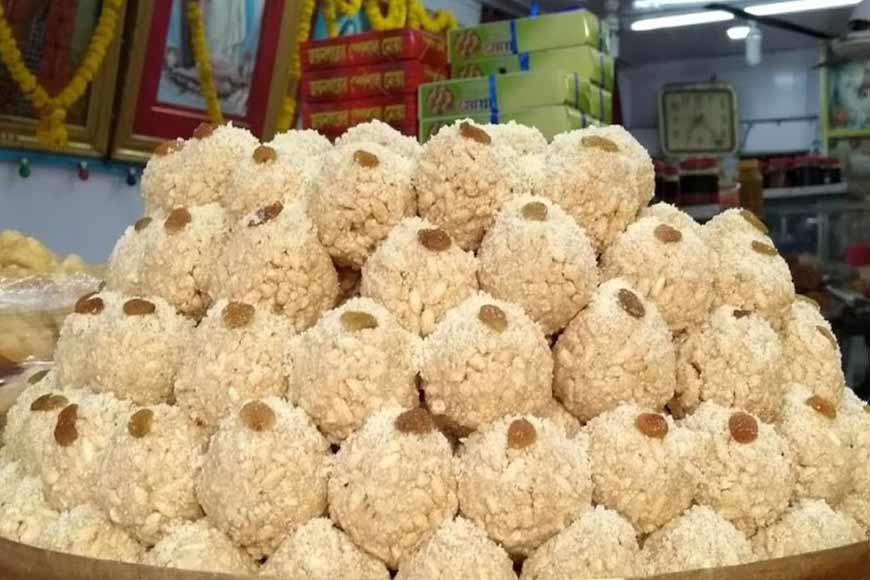
Winter crawls slowly all set to cast its short but intense spell in the rural belt of South Bengal. In the twilight hours of the evening when dense mist encompasses the environ, Joynagar, a tiny hamlet on the outskirts of Kolkata in South 24 Parganas, suddenly wakes up from its slumber and languorous villagers spring into action. The winter months are the most hectic ones for the people of Joynagar because the season indicates the time for preparation of ‘Joynagarer Moa,’ a seasonal Bengali sweetmeat delicacy handcrafted from date palm jaggery and Kanakchur khoi.
According to researchers, Joynagarer Moa was invented by Jamini-buro, a resident of Bahru village, near Joynagar town. It is said that he once prepared and served moa made with his own farm-grown Kanakchur Khoi and Nolen Gur to Sri Chaitanya Mahaprabhu who was very happy to partake in the sweetmeat. The fragile and soft melt-in-your-mouth moa is made with Kanakchur Khoi (fried, aromatic slender rice variety cultivated in Joynagar) and Bengal's legendary nolen gur (a liquid jaggery made from date palms and found only in winter), laced with crushed cardamom and raisins. The jaggery is best if it is poyra gur (the batch made from the first sap of the season).
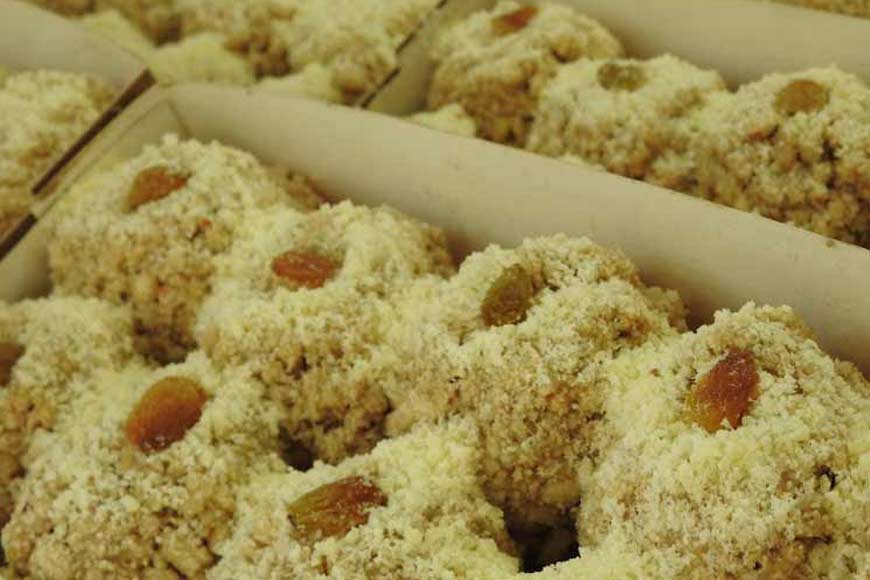
Gradually the moa’s fame spread and it became very popular in and around Joynagar. In 1929, Purna Chandra Ghosh aka Buchki Babu, and Nityagopal Sarkar set up their moa manufacturing factory (Sri Krishna Mishtanna Bhandar) in Joynagar and commercial production of the delicate confectionary began. Although, the moa is manufactured in many other adjoining villages, the name of Joynagar has stuck to this delightful dessert.
Joynagarer moa heralds winter for all Bengali households. The sweet is unique because the main ingredients, kanakchur khoi, and nolen gur, are available only during the winter months between November and January. Due to the high demand for this seasonal sweet, often less expensive versions of the moa are made using spurious materials. Joynagar Moa Nirmankari Society was set up in 2005 to act as a watchdog and conduct a thorough examination before authorizing any outlet to make the sweet. In 2015, Joynagarer Moa received the Geographical Indication (GI) tag and this boosted the morale of the moa makers.
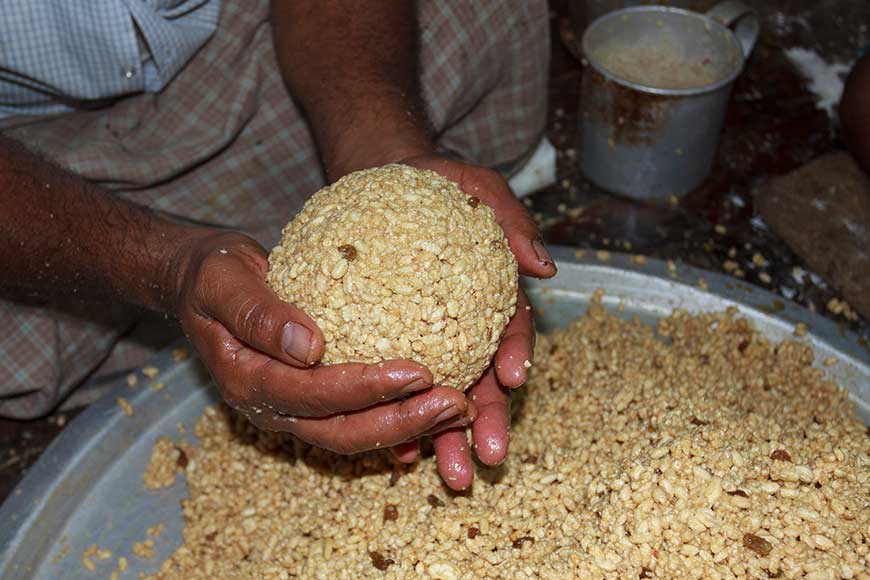
Recently, the state minister for Science, Technology, and Biotechnology, Ujjwal Biswas handed over GI certificates to 70 moa makers and announced that more artisans would be given this certificate based on their applications. This was encouraging for the craftsmen who are now optimistic about a significant rise in demand for Joynagarer moa, both within the country and abroad. There has always been a demand for the Joynagar moa from Bengalis living abroad but since the sweet is highly perishable — it can hold its taste and texture for only 5-7 days under normal refrigeration — it's commercial export was never seriously contemplated.
The moa is now among the very few agricultural GI-tagged items that have set sail for foreign shores. Last year, Joynagarer moa was first exported to Bahrain. Customers went gaga over the delicious taste and flavour of the moa and a deluge of new and repeat orders followed. There’s already demand from Italy, Canada, and Dubai and tradesmen are hopeful of a surge in demand shortly. Now initiatives have been taken to keep the moa fresh around the year and increase the shelf life of the product. Now a sizeable number of traders are gearing up to apply for the GI tag. The entire process has been streamlined for the applicants. One can directly apply to the Department of Science and Technology and a certificate will be issued in lieu of a nominal fee of Rs 10 only.
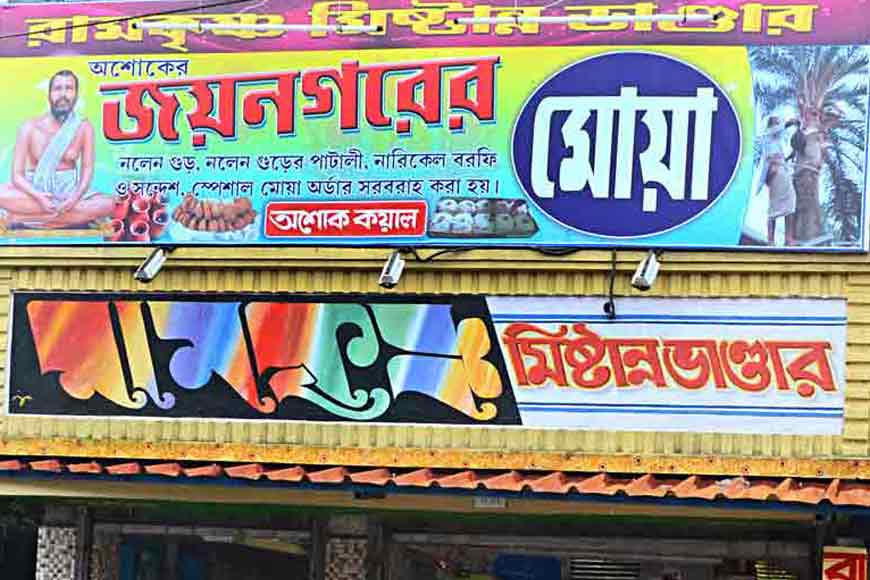
But for the last few years, the entire moa industry is going through bad times due to a lack of good quality nolen gur. Due to an insufficient supply of molasses, the taste and fragrance do not match the high standards required to make the moa. The moa-making process itself is very tedious and labour intensive. The sweet is unique because the main ingredients -- kanakchur khoi and nolen gur, are available only during the winter months between November and January. Also, only the first flush of palm juice is processed to make nolen gur, a kilogram of which is obtained by boiling ten litres of date-tree sap collected by the Shiulis – the community of expert tree climbers who specialize in sap extraction.
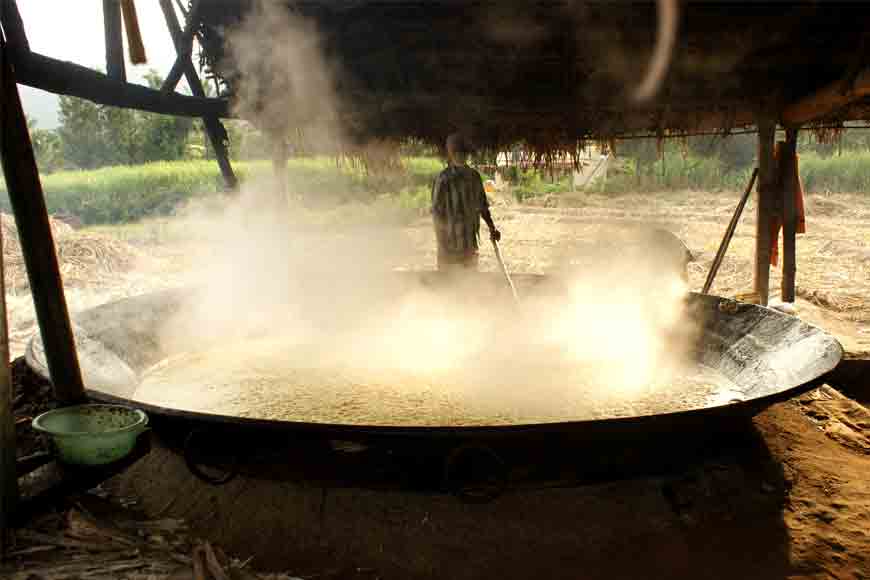
The challenge for the craftsmen these days is to procure good quality nolen gur as the Shiuli community, who traditionally extracted jaggery from date palm trees, have shifted to other occupations. Traditionally, there has been a high demand for deft Shiulis of Joynagar, Kultali, Basanti, and Gosaba for their expertise but the next generation has turned its face the other way and does not want to pursue the traditional trade. Along with that, a large number of date palm trees have been felled indiscriminately over the years, reducing their numbers drastically. As a result, there is a huge shortage of jaggery production. The erratic weather has been instrumental in ruining the moa business. Jaggery traders complain that due to untimely rain or sudden weather changes, the juice of the palm tree has decreased.
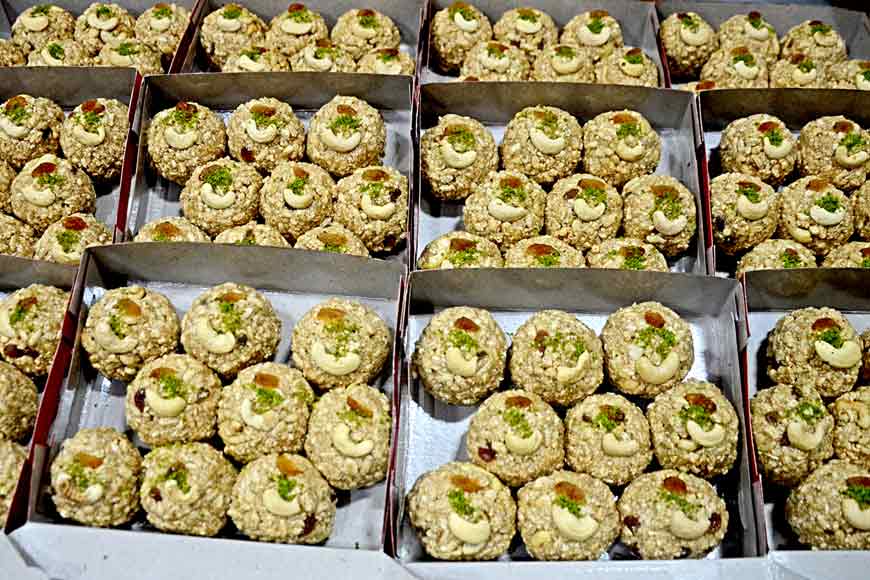
This has given a big blow to the moa industry as a whole. If the supply of palm juice is erratic, it is bound to affect the business. The high-quality, fragrant nolen gur is not available anymore and as a result, Joynagarer moa is slowly losing its niche market. Concrete steps have to be taken immediately to keep the glorious tradition rolling, otherwise, Joynagarer moa will become extinct soon.










